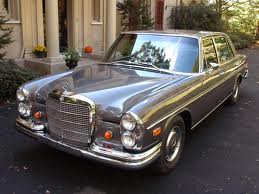
Performance & Classic Car Data

This edition of the Rover P5 Mk1/1A is the 4 speed / Manual version and was first brought out in 1958. This was at around the same time as the introduction of the 1959 Ferrari 410 Superamerica Series 3 and the 1959 Aston-Martin DB4 GT Zagato.This particular Rover P5 has a 2995cc Naturally Aspirated Petrol powerplant with 6 cylinders in a St formation.
The P5 shares its Petrol St6 engine configuration with the likes of the 1965 Aston-Martin DB6 1965 and the . If you're looking for other fast cars which share the P5's Rear Wheel Drive, Saloon combination then how about the 1982 Fiat X1/9 1.5 8V or the 1965 Aston-Martin DB6 1965.
Weighing in at 1638 kgs (3611 lbs) this makes the Rover P5 Mk1/1A in the same weight category as the 2022 BMW Z4 M40i 3.0 Turbo or the give or take 50kg.
![Mini Cooper Countryman John Cooper Works 1.5 Turbo - [2022] image Mini Cooper Countryman John Cooper Works 1.5 Turbo - [2022] image](/editionimages/2335.jpg)
The Rover P5 shares the same bhp with the 2022 Mini Cooper Countryman John Cooper Works 1.5 Turbo (134 bhp)
In terms of power the 2995cc 12V St6 engine produces 115 bhp (85 kW) @ 4500 rpm similar to the 2022 Mini Cooper Countryman John Cooper Works 1.5 Turbo (134 bhp) or the 2017 Ford Fiesta 1.5 TDCi ST-Line 120 (118 bhp).
The Naturally Aspirated St6 throws out 164 lb-ft (222.3 Nm) @ 1500 rpm placing it with cars of similar torque performance figures such as the 2022 Mini Cooper Countryman John Cooper Works 1.5 Turbo (162 lb-ft) or the 2020 Abarth 695 70th Anniversario 1.4 Turbo (184 lb-ft).
If one combines the weight with power or torque performance for the Rover P5 you can get a better idea of it's real world performance.
![Ford Escort MK1 Mexico RS - [1970] image Ford Escort MK1 Mexico RS - [1970] image](/editionimages/666.jpg)
The 1970 Ford Escort MK1 Mexico RS (95.2 bhp per ton) has similar Bhp Per Ton stats as the Rover P5.
The Rover P5 has a Power to weight ratio of 70.2 bhp per ton and 100.1 lb-ft per ton. Bhp Per Ton figures of the 1958 P5 competing with the 1970 Ford Escort MK1 Mexico RS (95.2 bhp per ton) or the 2008 Volvo XC60 3.0T (95.1 bhp per ton).
If you agree with the late great Carroll Shelby then arguably an even better indicator of potential performance, Torque. Use weight as well and you end up with - Torque per ton, with the Rover P5 generating around 100.1 lb-ft per ton. If you're curious as to what other cars have as much torque to weight then look no further than the 2008 Audi A4 1.8T Avant (125.1 lb-ft per ton) or the 2000 Vauxhall-Opel Omega 3.2 V6 Automatic (125.1 lb-ft per ton).
With a 0-60mph time of 16.00 secs or a 0-100km/h (0-62mph) of 16.5 secs, this made the Rover P5 Mk1/1A as fast as the 1994 Toyota Land Cruiser 3.0 TD (16.40 secs) the 1980 Porsche 911 SC (16.50 secs) the 1961 Skoda Felicia 1.1L Cabriolet (16.80 secs) the or the 1961 Austin-Healey Sprite MKII AN7 (16.80 secs). This Rover P5 Mk1/1A is also faster than the 1994 Toyota Land Cruiser 3.0 TD (16.40 secs) the 1980 Porsche 911 SC (16.50 secs) the 1961 Skoda Felicia 1.1L Cabriolet (16.80 secs) the and the 1961 Austin-Healey Sprite MKII AN7 (16.80 secs).
When talking about the performance of the Rover P5 on the drag strip it can reach a quarter mile in an estimated 19.78 secs @ 69.1 mph. Similar performance down the quarter mile can be found with the the 1985 Pontiac Firebird 5.0L Trans Am (19.69 secs), the 2012 Mini Cooper S Paceman (19.71 secs), and the 2015 Ford Focus 2.0 ST-2 TDCi 185PS (19.71 secs).
Modern performance cars are often artificially restricted to 155mph. The 1958 version of the Rover P5 Mk1/1A has a maximum speed of 100mph.
If maxing out your car on the AutoBahn is your thing and you're wondering what's faster than the 1958 Rover P5 Mk1/1A then how about the 1979 Dodge Magnum GT 5.9L V8 (111 mph), the 1976 Ford Granada 3.0 V6 (111 mph), or the 1975 Ford Escort Mk2 RS1800 (111 mph).









Mercedes 300 SEL 3.5
Engine: Naturally Aspirated Petrol | 3499cc 16v V8
Top Speed: 130 mph
0-60mph: 8.70 seconds

AC Cobra 427
Engine: Naturally Aspirated Petrol | 7000cc 16v V8
Top Speed: 265.5 kph
0-100kph: 4.3 seconds



















